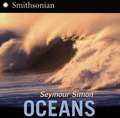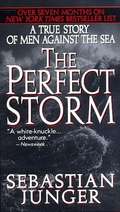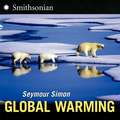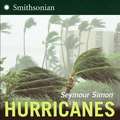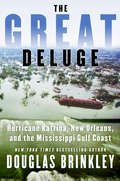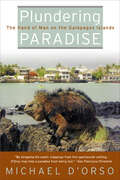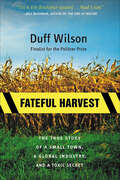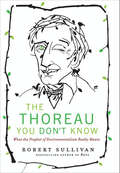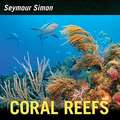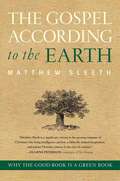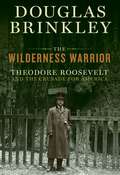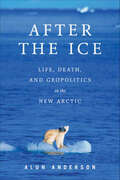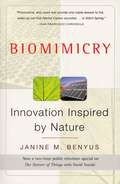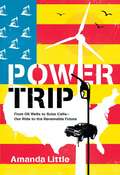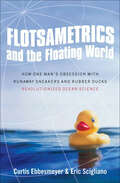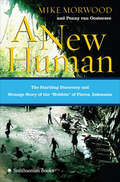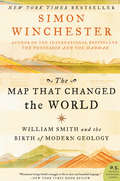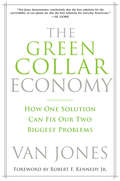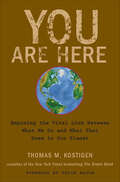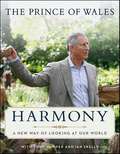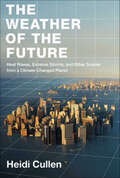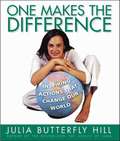- Table View
- List View
Oceans
by Seymour SimonText and photographs explore the physical characteristics, life forms, and fragility of the world's oceans. Exceptional nonfiction for children from two of the most trusted names in science education: Seymour Simon and the Smithsonian Institution.
The Perfect Storm: A True Story of Men Against the Sea
by Sebastian JungerThe bestselling book that became the blockbuster film starring George Clooney, Mark Wahlberg, and Diane Lane.<P> In October 1991, three weather systems collided off the coast of Nova Scotia to create a storm of singular fury, boasting waves over one hundred feet high. Among its victims was the Gloucester, Massachusetts-based swordfishing boat the Andrea Gail, which vanished with all six crew members aboard.<P> "Drifting down on swimmers is standard rescue procedure, but the seas are so violent that Buschor keeps getting flung out of reach. There are times when he's thirty feet higher than the men trying to rescue him. . . . [I]f the boat's not going to Buschor, Buschor's going to have to go to it. SWIM! they scream over the rail. SWIM! Buschor rips off his gloves and hood and starts swimming for his life."<P> It was the storm of the century, boasting waves over one hundred feet high a tempest created by so rare a combination of factors that meteorologists deemed it "the perfect storm." When it struck in October 1991, there was virtually no warning. "She's comin' on, boys, and she's comin' on strong," radioed Captain Billy Tyne of the Andrea Gail off the coast of Nova Scotia, and soon afterward the boat and its crew of six disappeared without a trace. <P> In a book taut with the fury of the elements, Sebastian Junger takes us deep into the heart of the storm, depicting with vivid detail the courage, terror, and awe that surface in such a gale. Junger illuminates a world of swordfishermen consumed by the dangerous but lucrative trade of offshore fishing, "a young man's game, a single man's game," and gives us a glimpse of their lives in the tough fishing port of Gloucester, Massachusetts; he recreates the last moments of the Andrea Gail crew and recounts the daring high-seas rescues that made heroes of some and victims of others; and he weaves together the history of the fishing industry, the science of storms, and the candid accounts of the people whose lives the storm touched, to produce a rich and informed narrative. The Perfect Storm is a real-life thriller that will leave readers with the taste of salt air on their tongues and a sense of terror of the deep.
Global Warming (Smithsonian-science)
by Seymour SimonAward-winning science writer Seymour Simon gives you a full-color photographic introduction to the causes and effects of global warming and climate change. <P><P>Earth's climate has always varied, but it is now changing more rapidly than at any other time in recent centuries. The climate is very complex, and many factors play important roles in determining how it changes. Why is the climate changing? Could Earth be getting warmer by itself? Are people doing things that make the climate warmer? <P><P>Supports the Common Core State Standards
Hurricanes
by Seymour SimonTakes young readers on an in-depth exploration of one of the most awe-inspiring and devastating events in nature: hurricanes. Award-winning science writer Seymour Simon explains what hurricanes are and how they develop; what storm surges are; and the basics of forecasting and precautions that families should take. Booklist commented: "This is unsurpassed for kindling interest in a scientific subject and communicating an understanding of its scope and significance".
The Great Deluge: Hurricane Katrina, New Orleans, and the Mississippi Gulf Coast
by Douglas BrinkleyIn the span of five violent hours on August 29, 2005, Hurricane Katrina destroyed major Gulf Coast cities and flattened 150 miles of coastline. But it was only the first stage of a shocking triple tragedy. On the heels of one of the three strongest hurricanes ever to make landfall in the United States came the storm-surge flooding, which submerged a half-million homes--followed by the human tragedy of government mismanagement, which proved as cruel as the natural disaster itself. In The Great Deluge, bestselling author Douglas Brinkley finds the true heroes of this unparalleled catastrophe, and lets the survivors tell their own stories, masterly allowing them to record the nightmare that was Katrina.
Plundering Paradise: The Hand of Man on the Galapagos Islands
by Michael D'OrsoMention the Galápagos Islands to almost anyone, and the first things that spring to mind are iguanas, tortoises, volcanic beaches, and, of course, Charles Darwin. But there are people living there, too -- nearly 20,000 of them. A wild stew of nomads and grifters, dreamers and hermits, wealthy tour operators and desperately poor South American refugees, these inhabitants have brought crime, crowding, poaching, and pollution to the once-idyllic islands. In Plundering Paradise, Michael D'Orso explores the conflicts on land and at sea that now threaten to destroy this fabled "Eden of Evolution."
The Blue Bear
by Lynn schoolerHis body twisted by adolescent scoliosis, Lynn Schooler's soul was scarred from the loneliness of someone who, at an early age, stood 'at a strange angle to the rest of the world'. He made a life on the slim crescent of remote Alaskan coastline surrounding the city of Juneau, a place where he was least likely to encounter people. In 1990, celebrated Japanese photographer Michio Hoshino hired Schooler to help him shoot a segment on humpback whales in Glacier Bay, and the two formed a profound friendship. Their conversations often revolved around the glacier bear (known as the blue bear for its unique granite-coloured fur), a nearly extinct creature so rare that it is shrouded in legend. Together the two men became obsessed with finding the animal, every year searching through Ice-Age vistas to capture the blue bear on film. Their obsession cost Hoshino his life when he was killed by a grizzly bear - but alone in the eighth year, Schooler finally found and photographed the elusive creature.
Fateful Harvest: The True Story of a Small Town, a Global Industry, and a Toxic Secret
by Duff WilsonI see soil in a new light, and I wonder about my own lawn and garden. What have I sprinkled on my backyard? Is somebody using my home, my food, to recycle toxic waste? It seems unbelievable, outlandish -- but what if it's true?A riveting expose, Fateful Harvest tells the story of Patty Martin -- the mayor of a small Washington town called Quincy -- who discovers American industries are dumping toxic waste into farmers' fields and home gardens by labeling it "fertilizer." She becomes outraged at the failed crops, sick horses, and rare diseases in her town, as well as the threats to her children's health. Yet, when she blows the whistle on a nationwide problem, Patty Martin is nearly run out of town.Duff Wilson, whose Seattle Times series on this story was a finalist for the Pulitzer Prize, provides the definitive account of a new and alarming environmental scandal. Fateful Harvest is a gripping study of corruption and courage, of recklessness and reckoning. It is a story that speaks to the greatest fears -- and ultimate hope -- in us all.
The Thoreau You Don't Know: What the Prophet of Environmentalism Really Meant
by Robert SullivanRobert Sullivan, the New York Times bestselling author of Rats and Cross Country, delivers a revolutionary reconsideration of Henry David Thoreau for modern readers of the seminal transcendentalist. Dispelling common notions of Thoreau as a lonely eccentric cloistered at Walden Pond, Sullivan (whom the New York Times Book Review calls “an urban Thoreau”) paints a dynamic picture of Thoreau as the naturalist who founded our American ideal of “the Great Outdoors;” the rugged individual who honed friendships with Ralph Waldo Emerson and other writers; and the political activist who inspired Martin Luther King, Jr., Mahatma Gandhi, and other influential leaders of progressive change. You know Thoreau is one of America’s legendary writers…but the Thoreau you don’t know may be one of America’s greatest heroes.
Coral Reefs
by Seymour SimonSeymour Simon knows how to explain science to kids and make it fun. He was a teacher for more than twenty years, has written more than 250 books, and has won multiple awards. <P><P>In Coral Reefs, Simon introduces elementary-school readers to the oceans’ reefs through wonderful descriptions and stunning full-color photographs. He encourages appreciation of the ecology of coral reefs, explains why they are in danger, and suggests ways kids can help save the endangered reefs. Lexile Measure: NC1110L
The Gospel According to the Earth
by Matthew Sleeth"God saw everything that he had made, and indeed, it was very good." -Genesis 1:31 As an emergency room doctor, Matthew Sleeth saw a disturbing increase in asthma, autoimmune diseases, cancers, and other environmentally related health issues. Although he considered himself an environmentalist, he lacked the commitment to do anything about it. One slow night in the ER, Sleeth picked up a Gideon's Bible in the waiting room. Although raised in a Christian home, he had long ago abandoned his childhood beliefs. Reading the gospels that night, Sleeth became a Christian, and to his shock, he began to uncover in the Scriptures an enormous wealth of environmental answers that he had been seeking. As a result, his family took an account of their lifestyle, drastically reduced their reliance on electricity and fossil fuels, and began sharing their inspirational journey with others. Here, Sleeth invites you on his family's journey as they realize that one cannot be a Christian without recognizing the Bible's call to care for God's creation. From Genesis to Revelation, the Bible is filled with instructions on how we can demonstrate our love for the Creator by caring for the earth. Sleeth leads us on a highly creative journey through Scripture, visiting some of the most important characters in the Bible and discovering what they can teach us about issues such as stewardship, caring for our neighbors, climate change, and pollution. Adam and Eve in the Garden of Eden teach us the importance of physical work in relation to discovering fulfillment and a sense of human purpose, the prophet Daniel calls us to question our dietary habits, and the story of Noah addresses key issues for life on earth: how do we relate to the Creator, to others in the human community, and to the rest of the natural world? With passion and faith, Sleeth provides a new green lens through which we can read the Bible to discover answers to our biggest questions about the environment and how to care for it.
The Wilderness Warrior: Theodore Roosevelt and the Crusade for America
by Douglas Brinkley<P>In this groundbreaking epic biography, Douglas Brinkley draws on never-before-published materials to examine the life and achievements of our "naturalist president." <P>By setting aside more than 230 million acres of wild America for posterity between 1901 and 1909, Theodore Roosevelt made conservation a universal endeavor. This crusade for the American wilderness was perhaps the greatest U.S. presidential initiative between the Civil War and World War I. Roosevelt's most important legacies led to the creation of the U.S. Fish and Wildlife Service and passage of the Antiquities Act in 1906. His executive orders saved such treasures as Devils Tower, the Grand Canyon, and the Petrified Forest. <P>Tracing the role that nature played in Roosevelt's storied career, Brinkley brilliantly analyzes the influence that the works of John James Audubon and Charles Darwin had on the young man who would become our twenty-sixth president. With descriptive flair, the author illuminates Roosevelt's bird watching in the Adirondacks, wildlife obsession in Yellowstone, hikes in the Blue Ridge Mountains, ranching in the Dakota Territory, hunting in the Big Horn Mountains, and outdoor romps through Idaho and Wyoming. <P>He also profiles Roosevelt's incredible circle of naturalist friends, including the Catskills poet John Burroughs, Boone and Crockett Club cofounder George Bird Grinnell, forestry zealot Gifford Pinchot, buffalo breeder William Hornaday, Sierra Club founder John Muir, U.S. Biological Survey wizard C. Hart Merriam, Oregon Audubon Society founder William L. Finley, and pelican protector Paul Kroegel, among many others. He brings to life hilarious anecdotes of wild-pig hunting in Texas and badger saving in Kansas, wolf catching in Oklahoma and grouse flushing in Iowa. Even the story of the teddy bear gets its definitive treatment. <P>Destined to become a classic, this extraordinary and timeless biography offers a penetrating and colorful look at Roosevelt's naturalist achievements, a legacy now more important than ever. Raising a Paul Revere-like alarm about American wildlife in peril--including buffalo, manatees, antelope, egrets, and elk--Roosevelt saved entire species from probable extinction. <P>As we face the problems of global warming, overpopulation, and sustainable land management, this imposing leader's stout resolution to protect our environment is an inspiration and a contemporary call to arms for us all. <P><b>A New York Times Bestseller</b>
After the Ice: Life, Death, and Geopolitics in the New Arctic
by Alun AndersonNew from Smithsonian Books, After the Ice is an eye-opening look at the winners and losers in the high-stakes story of Arctic transformation, from nations to native peoples to animals and the very landscape itself. Author Alun Anderson explores the effects of global warming amid new geopolitical rivalries, combining science, business, politics, and adventure to provide a fascinating narrative portrait of this rapidly changing land of unparalleled global significance.
Biomimicry
by Janine M. BenyusThis profound and accessible book details how science is studying nature's best ideas to solve our toughest 21st-century problems. If chaos theory transformed our view of the universe, biomimicry is transforming our life on Earth. Biomimicry is innovation inspired by nature - taking advantage of evolution's 3.8 billion years of R&D since the first bacteria. Biomimics study nature's best ideas: photosynthesis, brain power, and shells - and adapt them for human use. They are revolutionising how we invent, compute, heal ourselves, harness energy, repair the environment, and feed the world. Science writer and lecturer Janine Benyus names and explains this phenomenon. She takes us into the lab and out in the field with cutting-edge researchers as they stir vats of proteins to unleash their computing power; analyse how electrons zipping around a leaf cell convert sunlight into fuel in trillionths of a second; discover miracle drugs by watching what chimps eat when they're sick; study the hardy prairie as a model for low-maintenance agriculture; and more.
Power Trip
by Amanda LittleIn the tradition of Eric Schlosser's Fast Food Nation and Thomas L. Friedmam's Hot, Flat, and Crowded, prominent journalist Amanda Little maps out the history and future of America's energy addiction in a wonk-free, big-picture, solutions-oriented adventure story. After covering the environment and energy beat for more than a decade, Amanda Little decided that the only way to really understand America's energy crisis was to travel into the heart of it. She embarks on a daring cross-country power trip, and describes in vivid, fast-paced prose the most extreme and exciting frontiers of our energy landscape. At her side we visit an offshore oil rig, the cornfields of Kansas, the Pentagon's fuel-logistics division, the Talladega Superspeedway, New York City's electrical grid, and laboratories creating the innovations of a clean-energy future. As Little explains, energy is everything: It grows our crops, fights our wars, makes our plastics and medicines, warms our homes, moves our products and vehicles, and animates our cities. How did we develop this insatiable appetite for fossil fuels? Little travels through history to track the evolution of America's energy addiction: the 1897 installation of the world's first power plant (a Thomas Edison-J. P. Morgan venture); the 1901 Spindletop gusher that threw open the era of cheap American fuel; FDR's encounter with a Saudi king that set the stage for our dependence on Middle Eastern oil; General Motors' early decision to sell big guzzlers rather than small, efficient cars. Little illustrates how abundant oil and coal built the American superpower--even as they posed political and environmental dangers to the nation and the world. More important, we learn how the same American ingenuity that got us into this mess can get us out of it. With next-generation candor and optimism, Little explores the most promising clean-energy solutions on the horizon, arguing that everything we know about our past teaches us that we can solve the problems of our future. Hard-hitting yet forward-thinking, Power Trip is a lively and impassioned travel guide for all readers trying to navigate our shifting landscape and a clear-eyed manifesto for the younger generations who are inheriting the earth.
Flotsametrics and the Floating World: How One Man's Obsession with Runaway Sneakers and Rubber Ducks Revolutionized Ocean Science
by Curtis Ebbesmeyer Eric Scigliano“Ebbesmeyer’s goal is noble and fresh: to show how the flow of ocean debris around the world reveals ‘the music’ of the world’s oceans.”—New York Times Book ReviewThrough the fascinating stories of flotsam, one of the Earth’s greatest secrets is revealed. In Flotsametrics and the Floating World, maverick scientist Curtis Ebbesmeyer details how his obsession with floating garbage—from rubber ducks to discarded Nike sneakers—helped to revolutionize ocean science. Scientist and environmentalist David Suzuki, host of CBC TV’s “The Nature of Things,” calls Flotsametrics and the Floating World “Science and storytelling at its very best.” “A very enjoyable, if at times dark, book” (Nature), it is must reading for anyone interested in Oceanography, Environmental Science, and the way our world works.
A New Human: The Startling Discovery and Strange Story of the "Hobbits" of Flores, Indonesia
by Mike Morwood Penny Van OosterzeeIn October 2004, a team of Australian and Indonesian anthropologists led by Mike Morwood and Raden Pandji Soejono stunned the world with their announcement of the discovery of the first example of a new species of human, Homo floresiensis, which they nicknamed the "Hobbit." This was no creation of Tolkien's fantasy, however, but a tool-using, fire-making, cooperatively hunting person. The more Morwood and his colleagues revealed about the find, the more astonishing it became: standing only three feet tall with brains a little larger than a can of cola, the Hobbits forced anthropologists and everyone to reconsider what it means to be human.Morwood's work was no ordinary academic exercise. Along the way he had to tread warily through the cultural landscape of Indonesia—he has an embarrassing mishap with some hard-to-chew pork—and he demonstrated that sometimes the life of a real archaeologist can be a bit like Indiana Jones's when he risked his neck in an ocean-going raft to experience how ancient Indonesians might have navigated the archipelago. Even more, Morwood had to navigate the rock shoals of an archaeological bureaucracy that could be obtuse and even spiteful, and when the Hobbits became embroiled in scientific controversy—as no find of such magnitude could avoid—it proved easy for Morwood to get nearly swamped with trouble. Finds were stolen and damaged, and the backbiting was fierce. But the light of science, once brightened, is difficult to dim, and the story of the indefatigable Morwood's fight to defend his find discovery is an inspiration.
The Map That Changed the World
by Simon WinchesterIn 1793, a canal digger named William Smith made a startling discovery. He found that by tracing the placement of fossils, which he uncovered in his excavations, one could follow layers of rocks as they dipped and rose and fell--clear across England and, indeed, clear across the world--making it possible, for the first time ever, to draw a chart of the hidden underside of the earth. Smith spent twenty-two years piecing together the fragments of this unseen universe to create an epochal and remarkably beautiful hand-painted map. But instead of receiving accolades and honors, he ended up in debtors' prison, the victim of plagiarism, and virtually homeless for ten years more. The Map That Changed the World is a very human tale of endurance and achievement, of one man's dedication in the face of ruin. With a keen eye and thoughtful detail, Simon Winchester unfolds the poignant sacrifice behind this world-changing discovery.
The Map That Changed the World
by Simon WinchesterIn 1793, a canal digger named William Smith made a startling discovery. He found that by tracing the placement of fossils, which he uncovered in his excavations, one could follow layers of rocks as they dipped and rose and fell--clear across England and, indeed, clear across the world--making it possible, for the first time ever, to draw a chart of the hidden underside of the earth. Smith spent twenty-two years piecing together the fragments of this unseen universe to create an epochal and remarkably beautiful hand-painted map. But instead of receiving accolades and honors, he ended up in debtors' prison, the victim of plagiarism, and virtually homeless for ten years more. The Map That Changed the World is a very human tale of endurance and achievement, of one man's dedication in the face of ruin. With a keen eye and thoughtful detail, Simon Winchester unfolds the poignant sacrifice behind this world-changing discovery.
The Green Collar Economy: How One Solution Can Fix Our Two Biggest Problems
by Van JonesNow revised and updated, Van Jones's provocative and cutting edge New York Times bestseller The Green Collar Economy delivers a viable plan for solving the two biggest issues facing the country today--the economy and the environment.
You Are Here: Exposing the Vital Link Between What We Do and What That Does to Our Planet
by Thomas M. KostigenIn this groundbreaking book, the New York Times bestselling coauthor of The Green Book Thomas M. Kostigen reveals the vital missing link in today's environmental crisis: how we as individuals are connected to the most tenuous geography on the planet. Despite the recent prominence of "green" issues in the news, the direct relationship between our actions and the earth is too often ignored. But the seemingly insignificant things we do every day have the power to literally alter the landscape in the ongoing battle to resuscitate the planet.
Harmony: A New Way of Looking at Our World
by The Prince of Wales Tony Juniper Ian SkellyFor the first time, His Royal Highness Charles, the Prince of Wales, shares his views on how mankind’s most pressing modern challenges are rooted in our disharmony with nature. In the vein of Al Gore’s An Inconvenient Truth and Van Jones’ Green Collar Economy, Prince Charles presents the compelling case that solutions to our most dire crises—from climate change to poverty—lie in regaining a balance with the world around us.
The Weather of the Future: Heat Waves, Extreme Storms, and Other Scenes from a Climate-Changed Planet
by Heidi Cullen“A scorching vision of what life might be like in the warmer world that is already on its way. " — Michiko Kakutani, New York Times“Vivid and compelling, this book shows what life will be like in a warming world. Essential reading for anyone who’s planning to inhabit the planet for the next few decades.” — Elizabeth Kolbert, author of Field Notes from a CatastropheFrom Heidi Cullen, one of America’s foremost experts on weather and climate change and a senior research scientist with Climate Central, a fascinating and provocative book that predicts what different parts of the world will look like in the year 2050 if current levels of carbon emissions are maintained.Dr. Heidi Cullen, one of the world’s foremost climatologists and environmental journalists, offers a new way of viewing the climate-change phenomenon, not as some future event but as something happening right now in our own backyard. In this groundbreaking, provocative work, Dr. Cullen combines the latest scientific research with state-of-the-art climate-model projections to create climate-change scenarios for seven of the most at-risk locations around the globe.From the Central Valley of California, where coming droughts will jeopardize the entire state’s water supply, to New York City, whose infrastructure is extremely vulnerable to even a relatively weak Category 3 hurricane, to Greenland, where warmer temperatures will give access to mineral wealth buried beneath ice sheets for millennia, Cullen illustrates how, if left unabated, climate change will transform every corner of the world by midcentury—and no two regions will be affected in quite the same way.
One Makes the Difference
by Julia HillAfter her record-breaking two year tree sit, Julia Butterfly Hill has ceaslessly continued her efforts to promote sustainability and ecologically-minded ways to save the old-growth redwoods she acted so valiantly to protect. Here she provides her many young fans with what they yearn for most -- her advice on how to promote change and improve the health of the planet, distilled into an essential handbook. This book will be accessible to school-aged children, while accomodating the audience of parents and teachers who look to Julia as an example of how one person can "change the world." Packed with a variety of charts, diagrams, and interesting factoids, the book will be broken down into a series of steps and easy-to-follow lessons. It will be written broadly so as to accommodate all kinds of activism, though its core focus will be on environmental issues.
